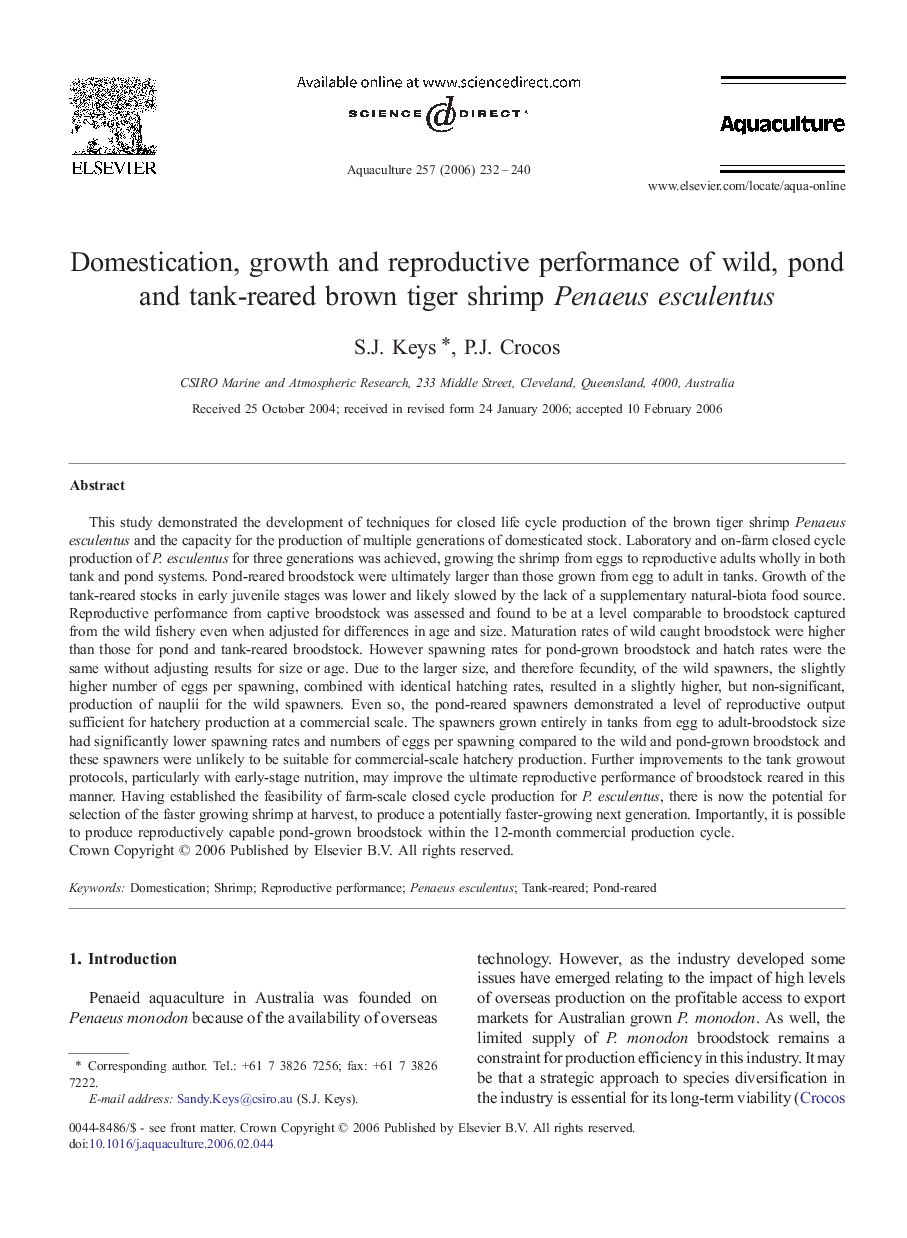| کد مقاله | کد نشریه | سال انتشار | مقاله انگلیسی | نسخه تمام متن |
|---|---|---|---|---|
| 8496797 | 1552984 | 2006 | 9 صفحه PDF | دانلود رایگان |
عنوان انگلیسی مقاله ISI
Domestication, growth and reproductive performance of wild, pond and tank-reared brown tiger shrimp Penaeus esculentus
دانلود مقاله + سفارش ترجمه
دانلود مقاله ISI انگلیسی
رایگان برای ایرانیان
کلمات کلیدی
موضوعات مرتبط
علوم زیستی و بیوفناوری
علوم کشاورزی و بیولوژیک
علوم آبزیان
پیش نمایش صفحه اول مقاله

چکیده انگلیسی
This study demonstrated the development of techniques for closed life cycle production of the brown tiger shrimp Penaeus esculentus and the capacity for the production of multiple generations of domesticated stock. Laboratory and on-farm closed cycle production of P. esculentus for three generations was achieved, growing the shrimp from eggs to reproductive adults wholly in both tank and pond systems. Pond-reared broodstock were ultimately larger than those grown from egg to adult in tanks. Growth of the tank-reared stocks in early juvenile stages was lower and likely slowed by the lack of a supplementary natural-biota food source. Reproductive performance from captive broodstock was assessed and found to be at a level comparable to broodstock captured from the wild fishery even when adjusted for differences in age and size. Maturation rates of wild caught broodstock were higher than those for pond and tank-reared broodstock. However spawning rates for pond-grown broodstock and hatch rates were the same without adjusting results for size or age. Due to the larger size, and therefore fecundity, of the wild spawners, the slightly higher number of eggs per spawning, combined with identical hatching rates, resulted in a slightly higher, but non-significant, production of nauplii for the wild spawners. Even so, the pond-reared spawners demonstrated a level of reproductive output sufficient for hatchery production at a commercial scale. The spawners grown entirely in tanks from egg to adult-broodstock size had significantly lower spawning rates and numbers of eggs per spawning compared to the wild and pond-grown broodstock and these spawners were unlikely to be suitable for commercial-scale hatchery production. Further improvements to the tank growout protocols, particularly with early-stage nutrition, may improve the ultimate reproductive performance of broodstock reared in this manner. Having established the feasibility of farm-scale closed cycle production for P. esculentus, there is now the potential for selection of the faster growing shrimp at harvest, to produce a potentially faster-growing next generation. Importantly, it is possible to produce reproductively capable pond-grown broodstock within the 12-month commercial production cycle.
ناشر
Database: Elsevier - ScienceDirect (ساینس دایرکت)
Journal: Aquaculture - Volume 257, Issues 1â4, 30 June 2006, Pages 232-240
Journal: Aquaculture - Volume 257, Issues 1â4, 30 June 2006, Pages 232-240
نویسندگان
S.J. Keys, P.J. Crocos,